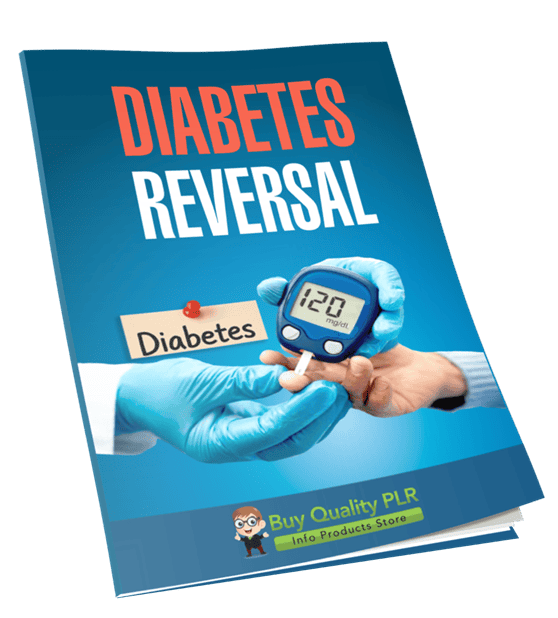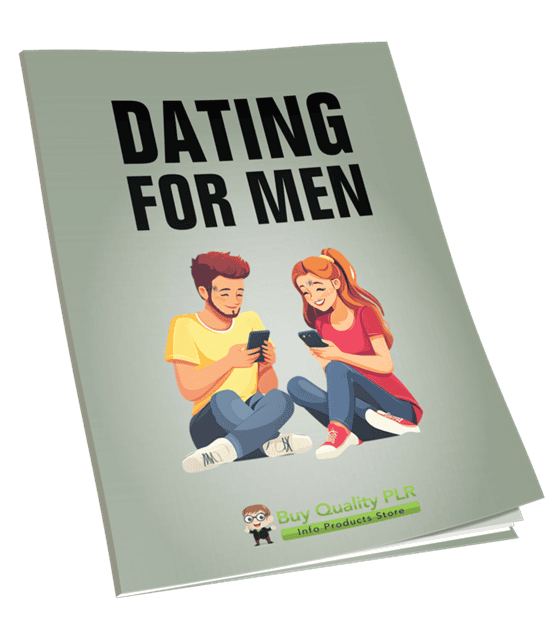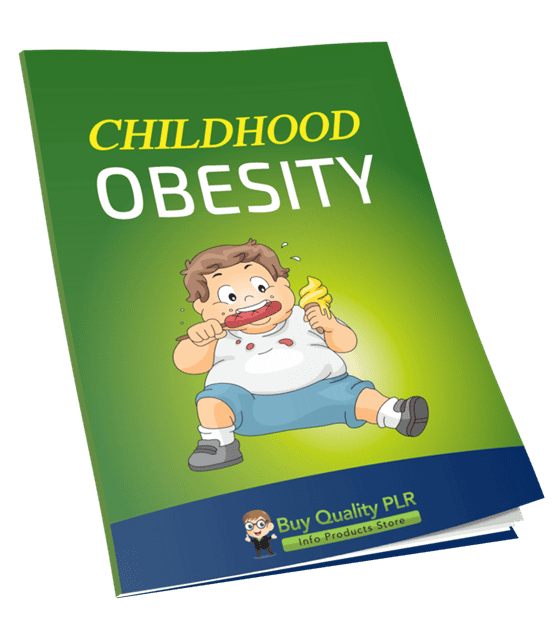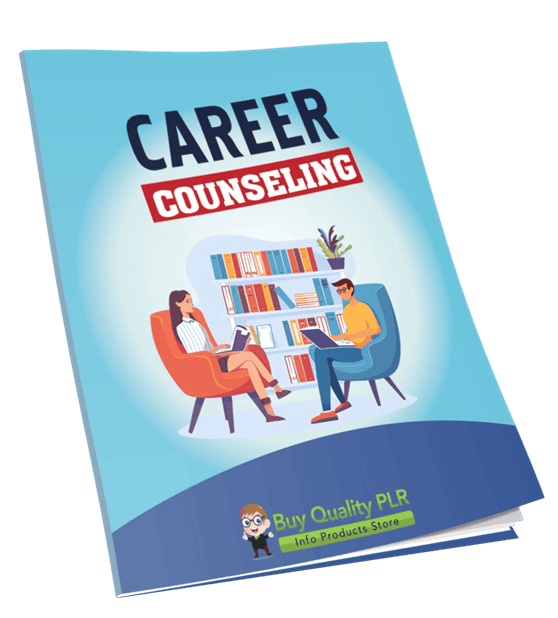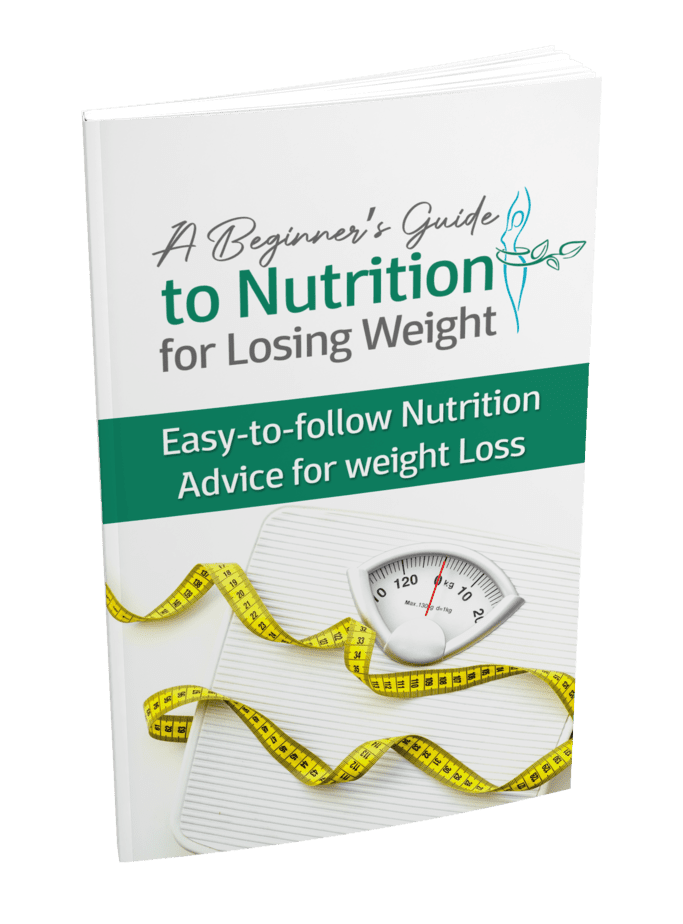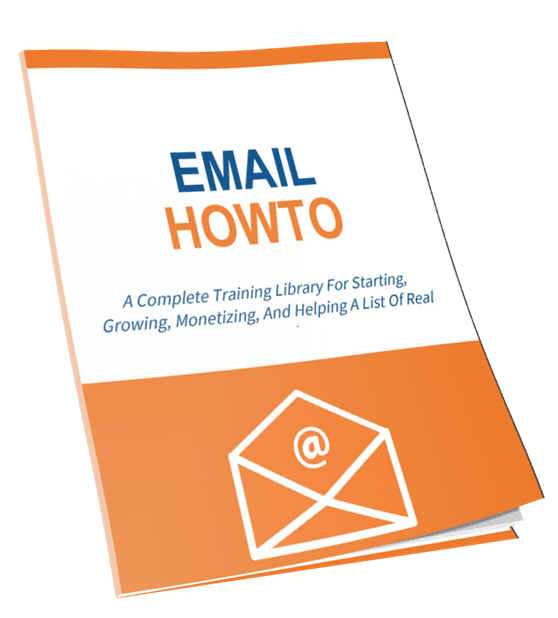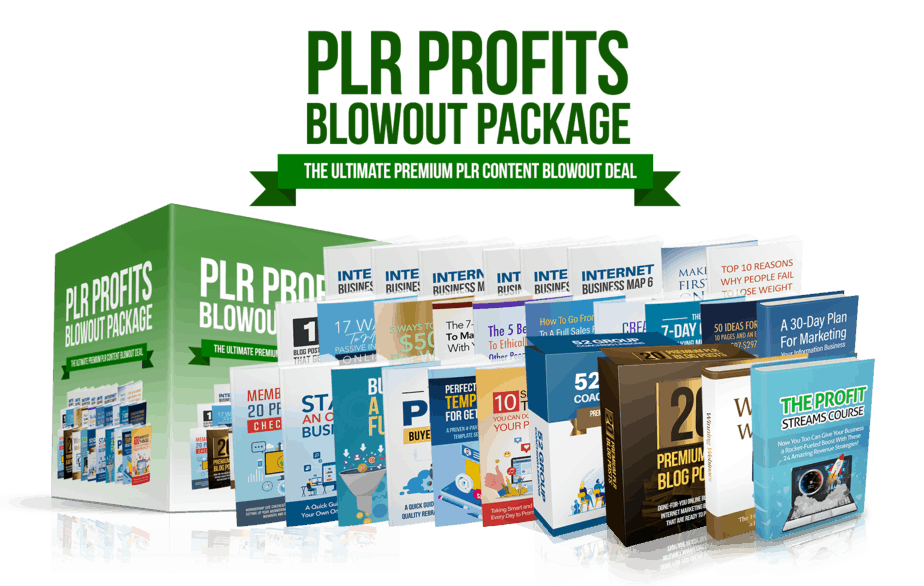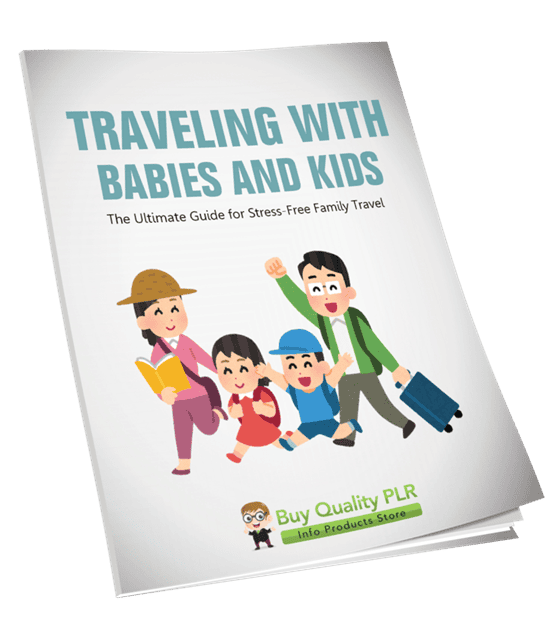
Traveling with Babies and Kids PLR Course 21k Words
in Kids PLR , Kids PLR Ebooks , PLR Checklists , PLR eBooks , PLR eCourses , PLR List Building Reports , Premium PLR , Premium PLR eBooks , Premium White Label Brandable PLR Coaching Courses , Private Label Rights Products , Travel PLR , Travel PLR eBooksChoose Your Desired Option(s)
has been added to your cart!
have been added to your cart!
#familytravel #parentingtips #travelwithkids #plrcontent #plrcourse #travelmarketing #parentingguide #familyadventures
Traveling with Babies and Kids PLR Course – The Ultimate Guide for Stress-Free Family Travel
Help Parents Master the Art of Traveling with Kids — While You Build a Profitable Business in the Family & Parenting Niche!
If you’ve ever seen parents struggle through airports, long road trips, or hotel stays with young kids in tow — you know traveling as a family can feel overwhelming.
That’s exactly why this Traveling with Babies and Kids PLR Course is such a powerful and profitable product.
With this ready-to-sell PLR course, you can teach parents how to plan smarter, pack better, and travel calmer — all while positioning yourself as an expert in the family travel niche.
This professionally written, comprehensive course provides step-by-step training and actionable advice for parents of babies and young children. It helps them turn stressful travel into fun, organized, and memorable experiences — and you can start selling it immediately under your own brand!
Presenting…
Traveling with Babies and Kids PLR Course 21k Words
What Makes This Course So Valuable
Traveling with children requires more than just extra luggage — it demands patience, preparation, and practical strategies.
This course covers it all, giving parents the confidence and tools they need to travel smoothly. With 19,125 words of expertly crafted content, it’s perfect for:
- Parenting coaches or bloggers creating digital products
- Family travel agencies or tour operators
- Lifestyle influencers looking for engaging content
- Membership site owners offering travel or parenting resources
- Entrepreneurs building a profitable PLR course portfolio
Every module is clear, actionable, and filled with real-world advice — making it easy for your buyers to apply instantly.
Course Overview
The Traveling with Babies and Kids PLR Course is divided into 5 practical modules with 4 simple steps each — taking parents from pre-trip preparation to handling real-world challenges on the go.
Module 1: Preparing for the Journey
Objective: Learn how to plan a smooth, stress-free trip from start to finish.
- Step 1: Planning Your Trip
How to choose child-friendly destinations, accommodations, and transportation options that make travel enjoyable for the whole family. - Step 2: Packing Essentials
Comprehensive checklists for baby gear, clothing, food, toys, and emergency supplies. - Step 3: Travel Documents and Health Preparations
Ensure all passports, vaccination records, and insurance details are ready to go. - Step 4: Prepping Kids for Travel
Tips for easing anxiety, explaining travel routines, and keeping children excited (not overwhelmed).
This module lays the groundwork for a stress-free journey by preparing parents for every detail — before they even leave home.
Module 2: Flying with Babies and Kids
Objective: Navigate air travel like a pro — from booking to landing.
- Step 1: Booking Family-Friendly Flights
Choosing the right airlines, seats, and flight times to minimize stress and fatigue. - Step 2: Navigating Airports with Kids
Surviving check-in lines, layovers, and airport security while keeping kids entertained. - Step 3: In-Flight Strategies for Comfort
Managing ear pressure, nap times, feeding, and fussy moments while flying. - Step 4: Dealing with Emergencies on Board
Handling tantrums, motion sickness, and medical concerns calmly and confidently.
This module transforms flight anxiety into smooth family adventures — helping parents feel empowered, not frazzled.
Module 3: Road Trips and Other Transportation
Objective: Make road, train, or bus travel easier, safer, and more fun.
- Step 1: Car Travel Safety & Comfort
Learn proper car seat installation, best break schedules, and on-the-road entertainment ideas. - Step 2: Traveling by Train or Bus
Discover kid-friendly tips for public transportation, including safety and hygiene. - Step 3: Managing Motion Sickness and Fatigue
Natural remedies and practical solutions to keep everyone feeling their best. - Step 4: Packing Smart for Long Trips
Organized systems for snacks, hygiene essentials, and emergency kits.
Parents will master the art of keeping kids comfortable and content during any journey — whether by car, train, or bus.
Module 4: Accommodation & Kid-Friendly Activities
Objective: Find safe, fun, and family-approved places to stay and play.
- Step 1: Choosing the Right Accommodation
Compare hotels, resorts, and vacation rentals — plus childproofing tips. - Step 2: Keeping Kids Safe in a New Environment
How to baby-proof rooms, set safety boundaries, and locate nearby healthcare facilities. - Step 3: Finding Fun and Educational Activities
Ideas for local attractions, nature adventures, and hands-on learning experiences. - Step 4: Managing Sleep Routines Away from Home
How to adjust sleep schedules and create a cozy “travel bedtime” environment.
This module ensures the entire family enjoys travel — balancing adventure with rest and security.
Module 5: Handling Challenges & Special Situations
Objective: Stay calm, flexible, and prepared for any situation.
- Step 1: Dealing with Jet Lag & Time Zone Changes
Simple ways to adjust sleep and hydration to minimize fatigue. - Step 2: Managing Picky Eaters While Traveling
Creative meal strategies, allergy safety, and handling limited food options. - Step 3: Handling Public Tantrums & Meltdowns
Parenting techniques to soothe emotions and keep your cool under pressure. - Step 4: Emergency Preparedness
First-aid tips, safety plans, and protocols for lost children or medical emergencies.
This final module prepares parents for the realities of travel — helping them respond with confidence and patience when challenges arise.
Additional Materials Included
Your Traveling with Babies and Kids PLR Package also includes:
- Checklist (765 Words): A quick-reference travel planner that parents can print and use for every trip.
- FAQs (936 Words): Expert answers to common questions about flying, packing, and staying organized with kids.
- Salespage (773 Words): Professionally written, ready-to-upload sales copy for your course or website.
These resources make your PLR product plug-and-play ready — so you can start selling immediately with no extra writing required.
Why This PLR Course is Perfect for You
The family travel market is booming. Parents want practical advice from credible sources, and this course gives you professionally written, SEO-friendly content you can brand as your own.
You’ll Love This PLR Course Because It’s:
✅ Comprehensive: Covers everything from packing lists to handling tantrums.
✅ Actionable: Parents can implement the tips right away.
✅ Brandable: Rebrand, edit, and sell it under your business name.
✅ Evergreen: Family travel is a timeless niche with consistent demand.
✅ Flexible: Use it as a course, eBook, membership resource, or email series.
This is a high-value, done-for-you product that saves you weeks of research, writing, and design — while helping you generate real profits.
How to Use and Profit from This Course
Your Traveling with Babies and Kids PLR Course comes with a full commercial license, giving you complete flexibility to monetize it in multiple ways:
- Sell It as a Full Digital Course
Host on Teachable, Kajabi, or Thinkific and sell for $47–$97 per customer. - Break It Into Mini-Guides
Turn each module into individual reports or checklists and sell for $10–$20 each. - Bundle with Other Parenting PLR Courses
Combine with other related content to create a complete “Family Travel Masterclass.” - Offer It in a Membership Site
Use it as premium content for subscribers in the parenting, wellness, or family lifestyle niche. - Create Multimedia Products
Convert the text into videos, podcasts, or printable workbooks to boost perceived value. - Use Portions as Lead Magnets or Blog Posts
Attract new subscribers and build your email list with valuable parenting tips. - Flip It for Profit
Customize and sell the course or site as a ready-made digital business.
No matter how you use it, this course offers limitless opportunities to create income while providing real value to your audience.
License Terms
You CAN:
- Sell and rebrand the course under your name.
- Convert it into videos, audio training, or physical books.
- Add it to a paid membership or coaching program.
- Break it up into smaller guides or email sequences.
You CANNOT:
- Pass on or resell PLR rights to your customers.
- Give away the full course in its current form for free.
- Offer 100% affiliate commissions (max is 75%).
Your customers can learn from it — but only you can sell it!
Take Action Today!
Family travel doesn’t have to be chaotic — and now, you can help parents around the world experience the joy of stress-free travel while building your brand and business.
With the Traveling with Babies and Kids PLR Course, you get:
✅ A complete, professionally written 19,125-word course
✅ A checklist, FAQ guide, and ready-made sales page
✅ Full commercial license for resale
✅ Evergreen content in a profitable niche
Download this PLR Course today, customize it with your brand, and start selling within hours.
It’s time to help families travel smarter — and profit while doing it! 🌍✈️👶
has been added to your cart!
have been added to your cart!
Here A Sample of Traveling with Babies and Kids PLR Course
This course is designed to equip parents with essential knowledge, strategies, and practical tips for stress-free travel with babies and young children.
Module 1: Preparing for the Journey
Step 1: Planning Your Trip
Choosing Child-Friendly Destinations, Accommodations, and Travel Modes
Planning a trip with babies and young children requires careful preparation to ensure a smooth and enjoyable experience for both parents and kids. The first step in this journey is selecting a child-friendly destination, suitable accommodation, and the best travel mode that caters to your family’s specific needs.
1. Choosing a Child-Friendly Destination
When traveling with children, not all destinations are equally suitable. A child-friendly destination should provide:
- Safety and Healthcare Access:
- Research crime rates, political stability, and healthcare facilities.
- Check if the country has hospitals, pediatric clinics, and pharmacies within close reach.
- Consider destinations with clean water, proper sanitation, and access to emergency medical services.
- Climate and Weather Considerations:
- Avoid extreme temperatures, high humidity, or destinations prone to natural disasters.
- Choose a destination where the weather is comfortable for children, especially infants.
- Check for potential health risks like mosquito-borne diseases in tropical areas.
- Ease of Accessibility and Child-Friendly Infrastructure:
- Opt for destinations with stroller-friendly sidewalks, family restrooms, and child-safe public spaces.
- Check if public transport is accessible with baby strollers and car seats.
- Look for places with minimal travel restrictions, making movement easier with children.
- Entertainment and Activities for Kids:
- Prioritize places with theme parks, playgrounds, zoos, aquariums, and interactive museums.
- Consider destinations that offer educational and cultural experiences suitable for young minds.
- Research indoor play areas for bad weather days.
- Availability of Baby Essentials:
- Some countries may have limited baby supplies (formula, diapers, baby food).
- Check if your destination allows you to easily purchase or carry necessary baby items.
Pro Tip:
Check online travel forums, blogs, and social media communities where parents share first-hand experiences about child-friendly destinations.
2. Selecting the Right Accommodation
The right accommodation can make or break a trip when traveling with children. Consider the following:
- Family-Friendly Hotels and Resorts:
- Choose hotels with family suites, baby cribs, and kid-friendly amenities.
- Look for hotels that provide free breakfast, play areas, and kids’ pools.
- Read reviews on platforms like TripAdvisor and Booking.com for real parent feedback.
- Vacation Rentals (Airbnb, Vrbo, etc.):
- Ideal for families needing kitchen access, extra space, and laundry facilities.
- Choose properties with childproofing features such as stair gates and covered outlets.
- Verify the host’s policies on children and additional safety measures.
- Essential Accommodation Features for Families:
- Cribs or baby beds to avoid carrying bulky travel cots.
- Refrigerator & microwave for storing and heating baby food.
- Proximity to supermarkets, medical facilities, and child-friendly attractions.
- Soundproofing to ensure kids can sleep peacefully without disturbances.
Pro Tip:
Call the hotel before booking to confirm baby-friendly services. Some hotels may claim to be family-friendly but lack essential facilities.
3. Selecting the Best Mode of Travel
The right mode of transportation depends on:
- Distance to the destination.
- Budget and comfort levels.
- Child’s age and adaptability to travel.
A. Air Travel (✈️)
- Pros: Fastest way to travel long distances, minimizes overall travel fatigue.
- Cons: Airports can be stressful with long security checks and limited mobility.
✔ Tips for Flying with Kids:
- Book direct flights whenever possible to avoid layover stress.
- Choose family-friendly airlines that offer early boarding, bassinets, and kid-friendly meals.
- Pick aisle seats for easy access to restrooms.
- Pack distractions (snacks, toys, tablets, coloring books) to keep children engaged.
B. Road Trips (🚗)
- Pros: Flexibility to stop whenever needed, control over travel pace.
- Cons: Long hours can be challenging, motion sickness risks.
✔ Tips for Road Trips with Kids:
- Ensure the car seat is properly installed and age-appropriate for safety.
- Plan frequent stops at rest areas to allow kids to stretch.
- Prepare a travel kit with snacks, water, wet wipes, and emergency items.
- Consider travel-friendly sleep solutions like neck pillows or portable baby beds.
C. Train Travel (🚆)
- Pros: More space to move around, scenic views, relaxed atmosphere.
- Cons: Limited privacy, may require multiple transfers.
✔ Tips for Train Travel with Kids:
- Book private compartments if available for a more comfortable experience.
- Carry baby essentials (diapers, snacks, and milk) as onboard options may be limited.
- Engage kids with travel games, books, and window-watching activities.
D. Public Transport (🚍, 🚇, 🚢)
- Pros: Budget-friendly, great for exploring cities.
- Cons: Crowded, limited stroller access.
✔ Tips for Using Public Transport with Kids:
- Avoid rush hours when using buses or metro services.
- Check if strollers are allowed on board.
- Keep a child harness or wrist link to prevent wandering in crowded areas.
Final Checklist for Step 1: Planning Your Trip
✔ Have you researched and selected a child-friendly destination?
✔ Have you confirmed the availability of medical facilities and baby supplies?
✔ Have you booked a family-friendly hotel or vacation rental?
✔ Have you checked for airline, train, or car travel policies for kids?
✔ Have you created a flexible itinerary that allows breaks for naps and meals?
Conclusion
Planning is the foundation of a smooth, stress-free trip with children. By choosing the right destination, accommodation, and travel mode, parents can reduce travel anxiety, ensure safety, and create lasting memories for the entire family. The next step is packing efficiently to ensure you have everything needed for a comfortable journey.
Step 2: Packing Essentials
Creating a Checklist for Baby Gear, Clothing, Food, and Emergency Supplies
Packing efficiently is crucial when traveling with babies and young children. Unlike solo or adult-only trips, parents must prepare for various scenarios, ensuring they have everything their child needs while maintaining a manageable amount of luggage. A well-organized packing checklist reduces stress and ensures a smooth, comfortable journey for both parents and children.
This step will cover:
- Essential Baby Gear – What to pack based on the mode of travel.
- Clothing Checklist – Choosing weather-appropriate and functional outfits.
- Food & Feeding Supplies – Packing formula, snacks, and utensils.
- Emergency & Health Supplies – Preparing for unexpected situations.
1. Packing Essential Baby Gear
Babies and toddlers require specific travel gear to ensure comfort and convenience. The choice of items depends on your mode of travel (air, car, train, or public transport) and your destination’s facilities.
A. Travel Strollers & Baby Carriers
✔ Lightweight, foldable stroller for easy movement through airports, train stations, and city streets.
✔ Baby carrier or sling for hands-free mobility, especially in crowded areas or places with uneven terrain.
Tip: Ensure the stroller is airline-approved if flying, and check rental options at the destination to reduce baggage.
B. Car Seats & Safety Equipment
✔ Infant car seat (rear-facing for babies under two years old) or a convertible car seat for toddlers.
✔ Travel booster seat if renting a car.
✔ Window shades for car travel to block sun exposure.
Tip: Some airlines allow free check-in for car seats and strollers—always confirm airline policies in advance.
C. Portable Sleeping Arrangements
✔ Travel crib or portable bassinet if your accommodation does not provide one.
✔ Familiar blanket or sleep sack to create a home-like sleep environment.
✔ White noise machine or app to drown out unfamiliar sounds.
Tip: If traveling by plane, book bulkhead seats for extra space, and request a baby bassinet (available on long-haul flights).
D. Diapering & Toiletries
✔ Portable changing pad for easy diaper changes on the go.
✔ Enough diapers for at least two days (buy more at your destination to save space).
✔ Diaper disposal bags for hygienic waste disposal.
✔ Travel-size baby wipes and diaper cream.
Tip: Pack diapers and wipes in easy-to-reach pockets in your carry-on for quick access.
2. Clothing Checklist for Babies & Kids
Packing the right clothing ensures your child is comfortable, regardless of the destination’s climate.
A. General Clothing Essentials
✔ Onesies and bodysuits (easy to layer and change).
✔ Comfortable pajamas (temperature-appropriate).
✔ Tops and bottoms (mix-and-match options).
✔ Sweater or light jacket (for unexpected temperature drops).
✔ Swimwear and sun hat (for warm destinations).
✔ Waterproof rain jacket and boots (for rainy climates).
✔ Soft shoes or sandals (break them in before the trip).
B. Packing Strategy for Different Climates
| Climate | Packing Tips |
| Warm Destinations (Tropical, Beach, Desert) | Pack lightweight, breathable cotton clothes. Use UV-protective clothing and wide-brim hats for sun protection. |
| Cold Destinations (Winter Travel, Mountains) | Use layering techniques (base layer, insulating layer, waterproof outer layer). Pack gloves, thermal socks, and a thick hat. |
| Rainy Destinations (Monsoon, Coastal Cities) | Waterproof jacket, extra pairs of socks, and quick-drying clothes are essential. Use waterproof shoe covers if needed. |
Tip: Pack at least one complete outfit per day plus two extra sets in case of spills or accidents.
3. Packing Food & Feeding Supplies
Children need familiar and nutritious food while traveling. Having the right supplies ensures they stay well-fed and comfortable.
A. Baby & Toddler Feeding Essentials
✔ Breastfeeding mothers: Pack a lightweight nursing cover, breast pump (if needed), and milk storage bags.
✔ Formula-feeding babies: Carry pre-measured formula in portioned containers for easy preparation.
✔ Bottles & sippy cups: Bring two or three bottles to rotate between washes.
✔ Bib & spill-proof mat for mess-free feeding.
✔ Portable bottle warmer (optional but useful for long trips).
B. Snacks & Easy-to-Carry Meals
✔ Dry snacks: Crackers, biscuits, dry cereal, and granola bars.
✔ Packaged baby food: Ready-to-eat pouches for convenience.
✔ Fruit & veggies: Pre-cut, easy-to-eat options like apple slices, bananas, and carrot sticks.
✔ Non-spill snack cups to minimize mess in transit.
Tip: Some airlines and trains allow baby food and formula beyond liquid limits—check regulations beforehand.
4. Emergency & Health Supplies
Always be prepared for medical situations while traveling with children. A well-packed first aid and emergency kit ensures you can handle minor health issues quickly.
A. First Aid Kit
✔ Digital thermometer to monitor fever.
✔ Infant pain reliever (acetaminophen or ibuprofen—check dosage with a doctor).
✔ Antiseptic wipes & bandages for minor cuts.
✔ Nasal aspirator for stuffy noses.
✔ Oral rehydration salts in case of dehydration.
✔ Motion sickness medicine (consult a pediatrician before use).
B. Travel Documents & Backup Essentials
✔ Passports & visas (check expiration dates).
✔ Printed copies of travel insurance and medical prescriptions.
✔ Emergency contact list (pediatrician, nearest hospital, embassy).
✔ Photos of your child (useful in case they get lost).
Tip: Keep medications in your carry-on to avoid issues if checked luggage is lost.
Final Checklist for Step 2: Packing Essentials
✔ Have you packed the right travel gear (stroller, car seat, crib)?
✔ Do you have enough weather-appropriate clothing for the trip?
✔ Have you packed food, bottles, and feeding accessories?
✔ Is your first aid kit complete with essential medications?
✔ Are all important documents and emergency contacts accessible?
Conclusion
Efficient packing is key to stress-free travel with babies and kids. By following a structured checklist, parents can ensure they have everything needed for a comfortable, safe, and enjoyable journey. The next step focuses on navigating airports, train stations, and security checks with ease.
Step 3: Travel Documents and Health Preparations
Managing Passports, Visas, Vaccination Records, and Travel Insurance
When traveling internationally with babies and children, proper documentation and health preparations are critical. Unlike solo travel, family travel requires additional planning, ensuring that every child has valid travel documents, necessary vaccinations, and comprehensive travel insurance.
This step will guide you through:
- Managing Passports and Visas – Ensuring all required documents are up to date.
- Vaccination and Health Requirements – Preparing your child for international health regulations.
- Travel Insurance and Emergency Planning – Safeguarding against unexpected health issues.
- Organizing and Storing Important Documents – Keeping all paperwork accessible and secure.
1. Managing Passports and Visas
Every child, regardless of age, must have a valid passport when traveling internationally. Additionally, many countries require entry visas or travel authorizations, which must be arranged well in advance.
A. Obtaining and Renewing Passports for Children
✔ Check Passport Validity: Many countries require at least six months’ validity beyond your travel dates.
✔ Apply Early: Passport processing can take several weeks to months in some countries.
✔ Photo Requirements: Ensure passport photos meet official government guidelines (neutral expression, white background, no hats or accessories).
✔ Parental Consent: In most countries, both parents must sign the application and provide proof of guardianship.
Tip: Some countries issue child passports with shorter validity (5 years instead of 10 years)—check renewal policies.
B. Visa Requirements and Applications
✔ Check Destination Visa Policies: Some countries allow visa-free entry or require an Electronic Travel Authorization (ETA) instead of a full visa.
✔ Apply Online or via Embassy: Many visas can be processed online, while others require an in-person appointment at the embassy.
✔ Provide Additional Documentation: Some visas require a birth certificate, parental consent letter, or proof of accommodation and return tickets.
✔ Consider Multiple-Entry Visas: If you plan to visit neighboring countries, check if a multi-country visa is available.
Tip: Use official government websites to avoid visa scams and fraudulent agencies.
2. Vaccination and Health Requirements
Many countries require specific vaccinations for entry, particularly for children. Checking health regulations early ensures your child is protected and prevents travel delays.
A. Checking Country-Specific Vaccination Requirements
✔ Routine Childhood Vaccines: Ensure all standard immunizations (measles, mumps, rubella, polio, and tetanus) are up to date.
✔ Mandatory Travel Vaccines: Some destinations require Yellow Fever, Hepatitis A/B, or Typhoid vaccines for entry.
✔ COVID-19 and Influenza: Many countries still have COVID-19 vaccination or testing requirements for travelers.
✔ Medical Certificate for Certain Conditions: If your child has allergies or medical conditions, a doctor’s note may be required for carrying medications.
Tip: Visit a travel health clinic at least 6 weeks before departure to allow time for any required vaccinations.
B. Carrying and Presenting Vaccination Records
✔ International Vaccine Certificate: Some countries require a WHO-approved Yellow Card (International Certificate of Vaccination).
✔ Digital & Physical Copies: Keep both printed and digital copies of all immunization records.
✔ Translation of Medical Documents: If traveling to a non-English-speaking country, translate important health records into the local language.
Tip: Some airlines check vaccination records before boarding—have documents easily accessible.
3. Travel Insurance and Emergency Planning
Travel insurance is essential for families, covering medical emergencies, trip cancellations, and lost luggage. Parents should choose a comprehensive plan that includes medical care for infants and children.
A. Choosing the Right Travel Insurance Plan
✔ Medical Coverage: Ensure hospitalization, emergency transport, and pediatric care are included.
✔ COVID-19 Coverage: Some destinations still require quarantine-related insurance for entry.
✔ Trip Cancellation Protection: Covers cancellations due to illness, family emergencies, or natural disasters.
✔ Lost Luggage and Travel Delays: Helps recover costs if essential baby gear is lost or delayed.
Tip: If traveling frequently, consider an annual family travel insurance policy for cost savings.
B. Emergency Contacts & Medical Assistance
✔ Save Local Emergency Numbers: Have ambulance, hospital, and embassy contact information for each destination.
✔ Find Nearest Hospitals: Research pediatric clinics and pharmacies near your accommodation.
✔ Carry a Medical Consent Letter: If one parent is traveling alone, they may need a notarized parental consent letter to authorize medical treatment.
✔ Check Insurance Claim Process: Know how to submit claims quickly in case of a medical emergency.
Tip: Download travel insurance apps for easy access to policy details and emergency contacts.
4. Organizing and Storing Important Documents
Keeping all essential documents organized and secure ensures a hassle-free journey. Parents should carry both physical copies and digital backups to prevent loss or theft.
A. Essential Documents Checklist
✔ Passports for each traveler (including babies).
✔ Visas or travel authorizations.
✔ Vaccination records and medical certificates.
✔ Travel insurance policy and emergency contact list.
✔ Printed itinerary, hotel reservations, and flight details.
✔ Parental consent letter (if traveling alone with a child).
B. Secure Storage Solutions
✔ Travel Document Organizer: Use a waterproof, zippered pouch to store passports, visas, and insurance.
✔ Digital Backups: Save copies of all documents in cloud storage (Google Drive, Dropbox, or OneDrive).
✔ Encrypted USB Drive: Keep a secure offline backup of all documents.
✔ Separate Copies for Each Parent: If traveling with a partner, divide essential documents between two bags in case of loss or theft.
Tip: Some airlines allow parents to upload digital vaccine records before departure—check airline policies.
Final Checklist for Step 3: Travel Documents & Health Preparations
✔ Have you checked your child’s passport expiration date?
✔ Do you need a visa or entry permit for your destination?
✔ Are your child’s vaccinations up to date, and do you have proof?
✔ Have you purchased family travel insurance?
✔ Do you have printed and digital backups of all documents?
✔ Have you researched emergency medical services at your destination?
Conclusion
Proper travel documentation and health preparations eliminate stress and ensure smooth entry into your destination country. By following these steps, you can avoid unexpected delays, health risks, and last-minute panic.
Step 4: Prepping Kids for Travel
Setting Expectations, Explaining the Trip, and Helping Kids Feel Excited and Secure
Traveling with children can be an exciting yet challenging experience. The key to a smooth journey is preparing them in advance by setting realistic expectations, explaining the trip in a way they understand, and creating a sense of excitement and security. When children know what to expect, they feel more comfortable and less anxious, making travel enjoyable for both parents and kids.
This step will guide you through:
- Explaining the Trip in a Child-Friendly Way – Helping kids understand the journey.
- Setting Realistic Expectations – Preparing them for the travel experience.
- Building Excitement for the Adventure – Making the trip fun before it even begins.
- Helping Kids Feel Safe and Secure – Addressing fears and making them feel comfortable.
1. Explaining the Trip in a Child-Friendly Way
Children thrive on routine, and travel can disrupt their sense of stability. To help them adjust, introduce the idea of travel gradually and explain what they will experience.
A. Tailoring the Explanation to Age and Understanding
✔ Toddlers (Ages 1-3): Keep explanations simple. Use short sentences like, “We’re going on a big airplane! We’ll see new places and have fun.”
✔ Preschoolers (Ages 3-5): Use books, pictures, or videos to help them visualize airplanes, hotels, and new destinations.
✔ School-Age Kids (Ages 6-12): Involve them in planning, show maps, and explain how long each part of the journey will take.
Tip: Use storytelling or a pretend-play scenario (e.g., playing “airport” at home) to help younger kids understand the process.
B. Using Visual Aids and Interactive Methods
✔ Show Photos and Videos: Look up images or videos of airports, airplanes, or the destination.
✔ Read Travel-Themed Books: Choose books that feature characters going on an adventure.
✔ Use a Map or a Globe: Point out the departure and arrival locations, explaining the route.
Tip: If possible, visit an airport before the trip or watch takeoff and landing videos to make it feel more familiar.
2. Setting Realistic Expectations
Many kids may not fully understand the challenges of travel, such as long security lines, waiting times, and sitting for extended periods. Preparing them in advance reduces frustration and helps them adapt more smoothly.
A. Walking Kids Through the Travel Experience
✔ Explain the Airport Process: Describe security checks, boarding, and airplane seating.
✔ Talk About Waiting and Delays: Let them know that waiting at the airport and during layovers is normal.
✔ Describe the Seating Arrangements: Explain where they will sit and what they can do during the flight.
✔ Discuss Time Differences: If traveling internationally, explain that time zones may change their sleep and meal schedules.
B. Practicing Key Travel Scenarios
✔ Role-Playing at Home: Act out airport security checks, boarding, and sitting in an airplane seat.
✔ Practicing Wearing a Seatbelt: Let them try wearing a seatbelt similar to one on an airplane.
✔ Setting Behavioral Expectations: Explain why staying in their seat and being respectful to others is important.
Tip: If your child has sensory sensitivities, discuss noises, ear-popping, and other possible discomforts in advance.
We’re also giving these extra bonuses
Traveling with Babies and Kids – Checklist

Traveling with Babies and Kids – FAQs

Traveling with Babies and Kids – Salespage Content

Package Details:
Word Count: 19 125 Words
Number of Pages: 98
Traveling with Babies and Kids – Bonus Content
Checklist
Word Count: 765 words
FAQs
Word Count: 936 words
Salespage Content
Word Count: 773 words
Total Word Count: 21 599 Words
Your PLR License Terms
PERMISSIONS: What Can You Do With These Materials?
Sell the content basically as it is (with some minor tweaks to make it “yours”).
If you are going to claim copyright to anything created with this content, then you must substantially change at 75% of the content to distinguish yourself from other licensees.
Break up the content into small portions to sell as individual reports for $10-$20 each.
Bundle the content with other existing content to create larger products for $47-$97 each.
Setup your own membership site with the content and generate monthly residual payments!
Take the content and convert it into a multiple-week “eclass” that you charge $297-$497 to access!
Use the content to create a “physical” product that you sell for premium prices!
Convert it to audios, videos, membership site content and more.
Excerpt and / or edit portions of the content to give away for free as blog posts, reports, etc. to use as lead magnets, incentives and more!
Create your own original product from it, set it up at a site and “flip” the site for megabucks!
RESTRICTIONS: What Can’t You Do With These Materials?
To protect the value of these products, you may not pass on the rights to your customers. This means that your customers may not have PLR rights or reprint / resell rights passed on to them.
You may not pass on any kind of licensing (PLR, reprint / resell, etc.) to ANY offer created from ANY PORTION OF this content that would allow additional people to sell or give away any portion of the content contained in this package.
You may not offer 100% commission to affiliates selling your version / copy of this product. The maximum affiliate commission you may pay out for offers created that include parts of this content is 75%.
You are not permitted to give the complete materials away in their current state for free – they must be sold. They must be excerpted and / or edited to be given away, unless otherwise noted. Example: You ARE permitted to excerpt portions of content for blog posts, lead magnets, etc.
You may not add this content to any part of an existing customer order that would not require them to make an additional purchase. (IE You cannot add it to a package, membership site, etc. that customers have ALREADY paid for.)
Share Now!

